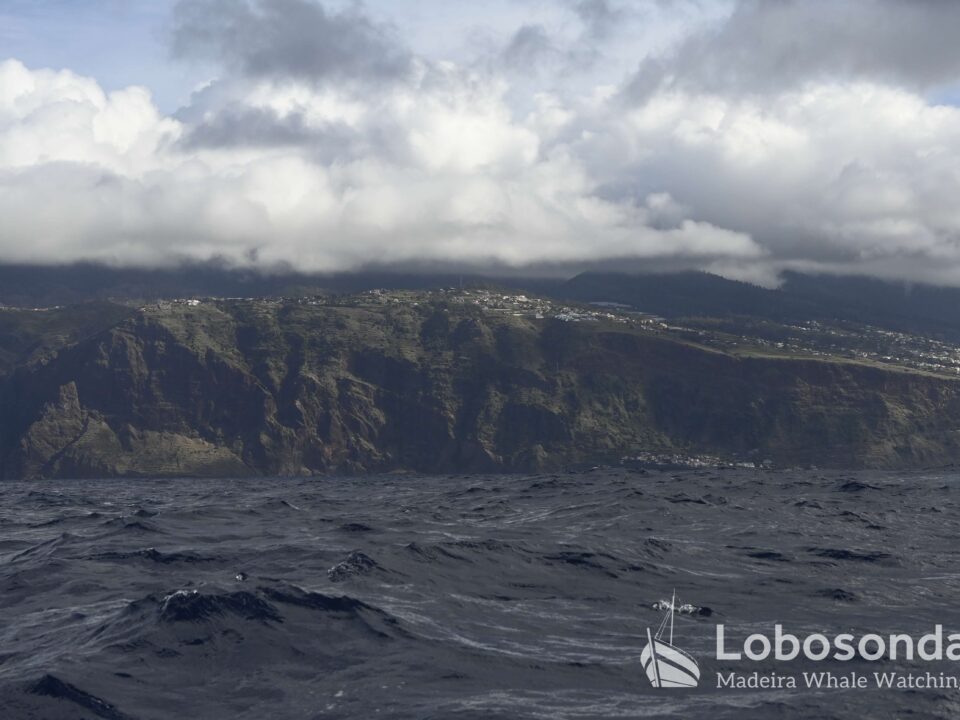
28.11.2019 – Familiar Lineup
December 5, 2019
30.11.2019 – Big pursuit
December 9, 2019Whale-watching is a concoction of patience and excitement; the knowledge that animals are around and could surface at any moment creates silent anticipation amongst all our guests.
As our traditional boat entered the sighting area 4 nautical miles off the coast of Calheta, we already saw the first powerful spouts and large flukes of two Sperm whales (Physeter macrocephalus). These enormous yet gentle cetaceans lift their tails perpendicular to the surface as they vertically plunge into the deep to hunt. Despite the fact hat the animals exist in fairly tightly knit groups, their long foraging dives are thought to be conducted in solitude with animals popping up alone or in pairs at various spots of the sighting area when they resurface. Yet, they don’t travel far and literally pop up scattered rather close around the initial sighting area. So after one animal dives, another could surface nearby at any given time. Our spotter had seen several Sperm whales in the area, so as the first two dove, our waiting game began.
Our patience was soon rewarded as one of the giants reappeared close to the bow of the boat, breathing powerfully as it broke the surface. Our guests were delighted and snapped some photos before we set off to our next sighting. The mixed group of Short-finned pilot whales (Globicephala macrorhynchus) and Bottlenose dolphins (Tursiops truncatus) that was discreetly heading west, was not easy to spot at first. Then, both groups of animals suddenly surfaced in unison and stayed near our Ribeira Brava for some time before they disappeared below the surface of the Atlantic once again.
Their last dive was our cue to begin our return to the marina, and we ended this enjoyable afternoon at sea understanding that patience is indeed a virtue.
By Paula Thake
Sightings of the day
Ribeira Brava
14:30 Bottlenose dolphins, Short-finned pilot whales, Sperm whales











